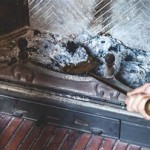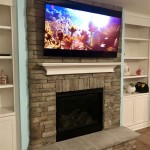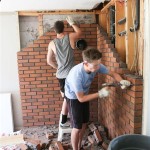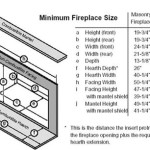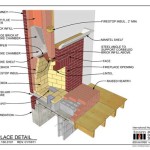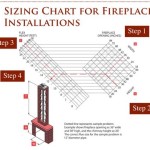Glass Gas Fireplaces: Aesthetics, Efficiency, and Considerations
Glass gas fireplaces have emerged as a popular alternative to traditional wood-burning fireplaces and older gas fireplace models. Their appeal lies in their modern aesthetic, ease of use, and improved efficiency. These units utilize tempered or ceramic glass to enclose the flames, providing a clear and unobstructed view of the fire while simultaneously enhancing safety and reducing heat loss. This article delves into the various aspects of glass gas fireplaces, exploring their advantages, different types, installation considerations, maintenance requirements, and safety features.
The transition from wood-burning fireplaces to gas-fueled options has been driven by several factors, including environmental concerns, convenience, and a desire for cleaner and more efficient heating solutions. Wood fireplaces, while offering a classic ambiance, produce significant amounts of particulate matter and require a constant supply of wood, which can be cumbersome and expensive. Early gas fireplaces, while cleaner, often lacked visual appeal and efficiency. The introduction of glass-enclosed gas fireplaces addressed these shortcomings by providing a visually appealing, convenient, and relatively eco-friendly heating option.
Glass gas fireplaces offer a diverse range of styles and designs to suit various architectural preferences. From contemporary linear models to more traditional designs with faux logs, homeowners can find a unit that complements their existing décor. The use of glass allows for greater design flexibility, enabling manufacturers to create fireplaces with various flame patterns, fuel bed options (such as glass beads, stones, or ceramic logs), and decorative surrounds. This adaptability has made glass gas fireplaces a popular choice for both new construction and renovation projects.
Enhanced Aesthetics and Design Versatility
One of the primary reasons for the popularity of glass gas fireplaces is their aesthetic appeal. Unlike traditional fireplaces, which often have a limited view of the flames due to grates and other obstructions, glass-enclosed units provide a panoramic view of the fire. This unobstructed view creates a more immersive and captivating experience, making the fireplace a focal point in the room. The glass used in these fireplaces is typically tempered or ceramic, designed to withstand high temperatures and provide a clear, undistorted view of the flames.
The design versatility of glass gas fireplaces is another significant advantage. They can be installed in various configurations, including wall-mounted, freestanding, and built-in models. Linear fireplaces, characterized by their long, horizontal design, are particularly popular in modern homes. These units often feature sleek lines, minimalist designs, and vibrant flame patterns, creating a contemporary and sophisticated look. Traditional-style glass gas fireplaces, on the other hand, may incorporate features such as faux logs, brick liners, and decorative mantels to replicate the look and feel of a traditional wood-burning fireplace.
Furthermore, the fuel bed options available for glass gas fireplaces add to their design flexibility. Homeowners can choose from a variety of materials, including glass beads, stones, ceramic logs, and even driftwood replicas. Each material offers a different aesthetic, allowing homeowners to customize the look of their fireplace to match their personal preferences. Glass beads, for example, create a modern and elegant look, while ceramic logs provide a more traditional and rustic feel.
The integration of lighting features further enhances the aesthetic appeal of glass gas fireplaces. Many models incorporate LED lighting to illuminate the fuel bed and create a warm and inviting ambiance. These lighting systems can often be adjusted to different colors and intensities, allowing homeowners to customize the lighting to suit their mood and décor. The combination of the unobstructed view of the flames, the diverse fuel bed options, and the integrated lighting features makes glass gas fireplaces a versatile and aesthetically pleasing heating solution.
Improved Efficiency and Heating Performance
In addition to their aesthetic advantages, glass gas fireplaces offer improved efficiency compared to traditional wood-burning fireplaces and older gas fireplace models. The glass enclosure helps to contain the heat within the fireplace and reduce heat loss through the chimney. This results in a more efficient heating performance, allowing homeowners to heat their homes more effectively and reduce their energy bills.
The efficiency of a glass gas fireplace is typically measured by its AFUE (Annual Fuel Utilization Efficiency) rating. This rating indicates the percentage of fuel that is converted into usable heat. Higher AFUE ratings indicate greater efficiency. Modern glass gas fireplaces often have AFUE ratings of 70% or higher, significantly higher than traditional wood-burning fireplaces, which may have AFUE ratings of 20% or less. Some models even achieve ratings above 80%, delivering exceptional energy savings.
Direct vent technology further enhances the efficiency of glass gas fireplaces. Direct vent fireplaces draw combustion air from outside the home and exhaust combustion gases directly to the outside through a sealed vent system. This prevents the fireplace from drawing heated air from inside the home, which can lead to drafts and increased energy consumption. Direct vent technology also improves indoor air quality by preventing the back drafting of combustion gases into the home.
Zone heating is another benefit of glass gas fireplaces. These units can be used to heat specific areas of the home, such as living rooms or bedrooms, allowing homeowners to reduce their reliance on central heating systems and save energy. By focusing the heat in the areas where it is needed most, zone heating can significantly lower energy bills and improve overall comfort.
Many glass gas fireplaces are equipped with thermostats and remote controls, allowing homeowners to easily adjust the heat output and maintain a consistent temperature. Programmable thermostats can be used to automatically adjust the heat based on the time of day or the day of the week, further enhancing energy efficiency and convenience. The combination of the glass enclosure, direct vent technology, zone heating capabilities, and programmable thermostats makes glass gas fireplaces a highly efficient and cost-effective heating solution.
Safety Features and Maintenance Considerations
Safety is a paramount concern when it comes to fireplaces, and glass gas fireplaces incorporate several features to ensure safe operation. The glass enclosure serves as a barrier, preventing accidental contact with the flames and reducing the risk of burns. The use of tempered or ceramic glass, designed to withstand high temperatures, further enhances safety by minimizing the risk of shattering or cracking. Many units also include safety screens or barriers to prevent children and pets from getting too close to the glass surface.
Carbon monoxide detectors are essential safety devices for any home with a gas-burning appliance. These detectors monitor the levels of carbon monoxide, a colorless and odorless gas that can be produced by incomplete combustion. If carbon monoxide levels become too high, the detector will sound an alarm, alerting occupants to the danger and allowing them to evacuate the premises. It is crucial to install and maintain carbon monoxide detectors in accordance with manufacturer's instructions to ensure proper operation and safety.
Regular maintenance is essential to ensure the safe and efficient operation of a glass gas fireplace. This includes cleaning the glass, inspecting the vents, and checking the burner for any signs of damage or wear. The glass should be cleaned regularly with a non-abrasive cleaner to remove any soot or residue. The vents should be inspected to ensure that they are clear of any obstructions, such as leaves or debris. The burner should be inspected for any signs of corrosion, cracks, or other damage. A qualified technician should be consulted to perform any necessary repairs or replacements.
Professional servicing is recommended at least once a year to ensure that the fireplace is operating safely and efficiently. A qualified technician can inspect the fireplace for any potential problems, clean the burner, check the gas connections, and test the safety features. Regular professional servicing can help to prevent costly repairs and extend the lifespan of the fireplace.
Proper ventilation is crucial for the safe operation of a gas fireplace. The fireplace should be vented in accordance with local building codes and manufacturer's instructions. Improper ventilation can lead to the buildup of carbon monoxide and other harmful gases, posing a serious health risk. It is important to ensure that the vent system is properly installed and maintained to prevent any potential safety hazards. Regular inspection of the vent system is important, especially after severe weather that might impact the structure or integrity of the venting system.

Studio Glass Gas Fires Gazco Built In Contemporary Fireplaces

Studio Glass Gas Fires Gazco Built In Contemporary Fireplaces

Bhd4pgn Napoleon Fireplaces Ascent Peninsula With Glass Bed Natural Gas Fireplace Big George S Home Appliance Mart

Building Modern Gas Fireplace By Element4 Trisore 140 Three Sided Glass 102729b Arcat

Gazco Studio Glass Fronted Gas Fire Flames Co

Enviro G Series Glass Burner Traditional Gas Or Propane Fireplace Fireplaces By Cameron

Gdig3n Napoleon Fireplaces Oakville 3 Glass Gas Fireplace Insert Big George S Home Appliance Mart

Chaska 34 Gas Fireplace Insert Kozy Heat

Glass Fireplace Doors

Fireplace Installation Instructions Diamond Fire Glass
Related Posts

